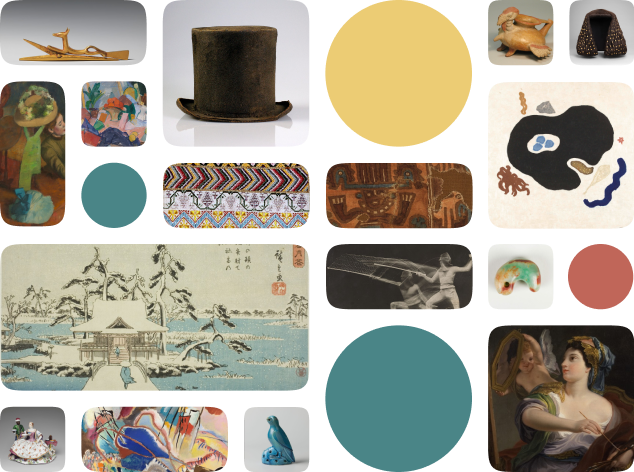Onderdeel van het begrafenisritueel van bewoners van Formosa
Creator Name
Cultural Context
Date
Source
About the Work
This illustration, engraved by Flemish printmaker Hendrik Frans Diamaer after a drawing by Matthijs Balen, was published in 1726 in the fourth volume of Oud en Nieuw Oost-Indiën (Old and New East Indies). Compiled in eight volumes by François Valentijn, a Dutch Calvinist minister and former Dutch East India Company (VOC) officer, the encyclopedic work aimed to educate Dutch readers about the diverse peoples, landscapes, and cultures under VOC influence. Alongside Valentijn’s travel narratives, the volumes include thousands of maps, official records, and engraved illustrations such as this one. For such illustrations, Valentijn and his publisher Johannes van Braam commissioned prominent European artists to create images based on a combination of Valentijn’s own accounts and sketches, earlier travel reports, and previously unpublished VOC documents. Where firsthand visual references were scarce, the artists likely supplemented the scenes with imagined or generalized details. This is evident in Diamaer and Balen’s depiction of an unspecified Indigenous funerary ritual: the figures lack distinct features and are portrayed with broadly European traits, marking the print as a Western reconstruction shaped in part by 18th-century orientalist perspectives.
Although its primary focus is the Dutch East Indies (present-day Indonesia and parts of Malaysia), Oud en Nieuw Oost-Indiën also reflects the broader reach of Dutch colonial presence across maritime Asia. Appearing on page 85 of the section titled “Tayouan of Formosa,” this print is notable as the only visual depiction of Taiwanese people in the entire series. Marked with the date 1663—the supposed year when the funerary ritual was first observed by Western travelers—the scene was recorded in the midst of the Dutch occupation of Taiwan, known in Europe by the Portuguese name “Formosa.” The reference to “Tayouan” likely denotes the area surrounding Fort Zeelandia in modern-day Tainan, which served as the administrative center of Dutch Formosa (1624-1663). While this might suggest that the Indigenous people depicted are the Taiwanese Plains Indigenous people who historically lived around Tainan, the illustration does not specify this.
While the scene remains culturally unspecified, it reveals an ethnographic impulse by incorporating recognizable elements of Indigenous Taiwanese culture. The blazing fire likely references the three-stone fire (hka’), once common in many households. However, rather than stones, the fire appears fueled by logs, reflecting a detail more typical of European hearths at the time. Fire holds an important ritual significance in the funerary customs of several Taiwanese Indigenous groups, such as the Atayal people, symbolizing warmth and care for the spirit of the deceased, who is traditionally buried beneath or inside the home. The depicted structure’s wooden walls, ceiling, and vertical supports also echo traditional six-layer Atayal dwellings. Although a direct link to the Atayal or other groups is uncertain, these shared elements suggest how Valentijn’s depictions drew on fragmented and interpreted Indigenous knowledge.
Titel in boekdruk buiten plaatrand. Rechtsboven genummerd: 85. Linksboven en rechtsboven: 1663.
Work details
Title
Creator
Worktype
Cultural Context
Material
Dimensions
Technique
Language
Date
Provenance
Style Period
Rights
Inscription
Location
Source
Subjects
Topic
Curationist Contributors
Related Content
All Works in Curationist’s archives can be reproduced and used freely. How to attribute this Work:
Help us improve this content!
Save this work.
